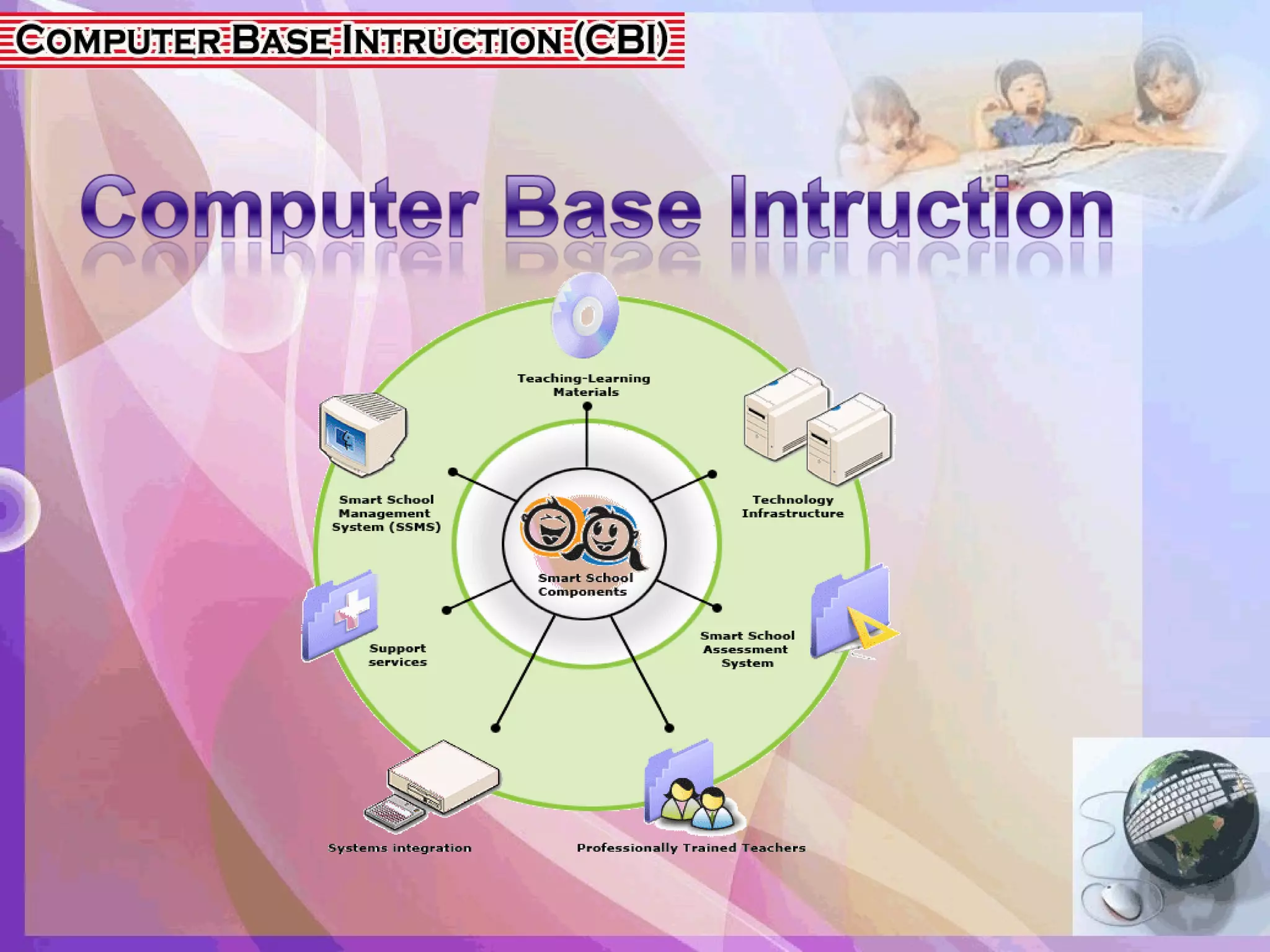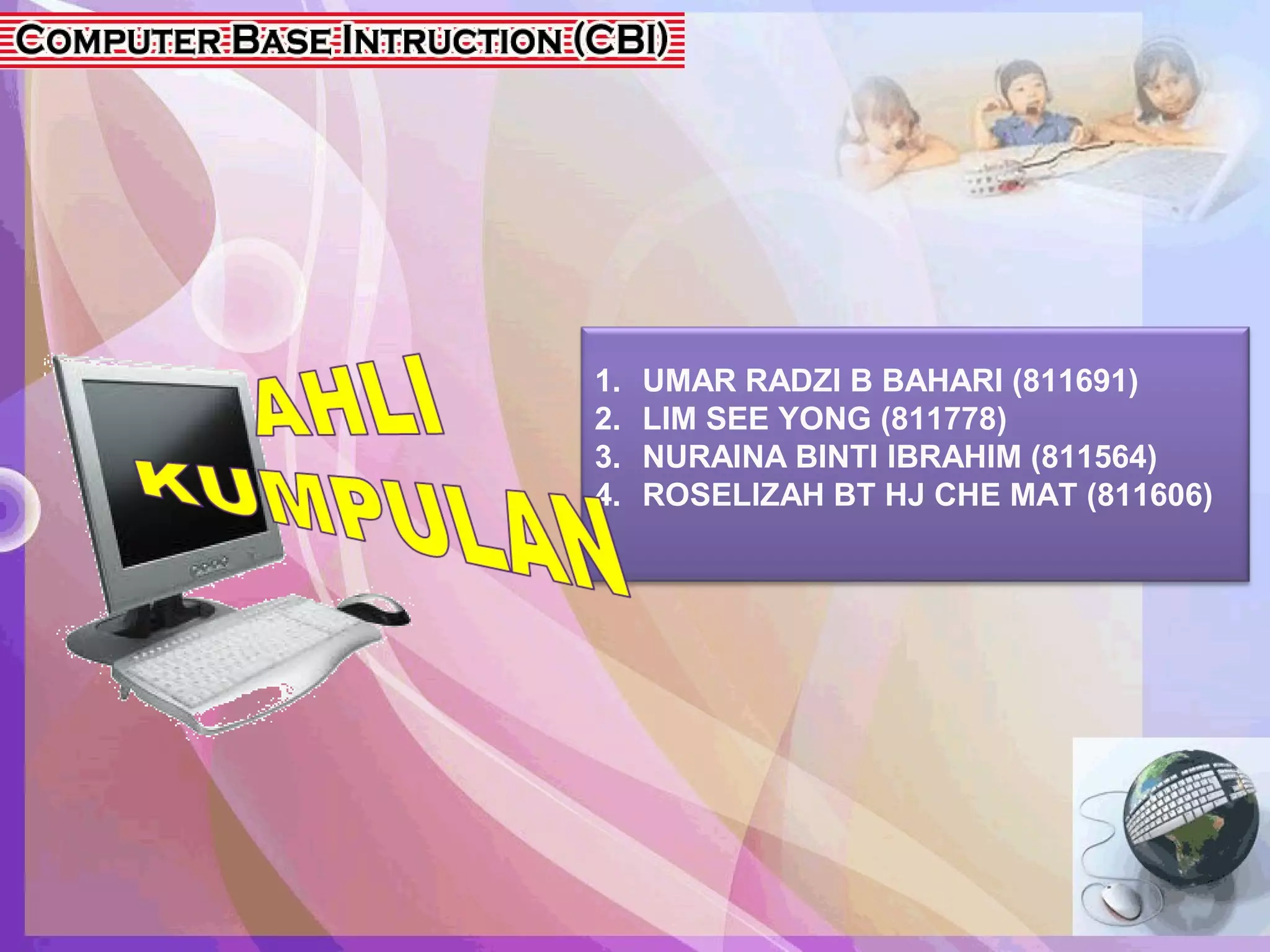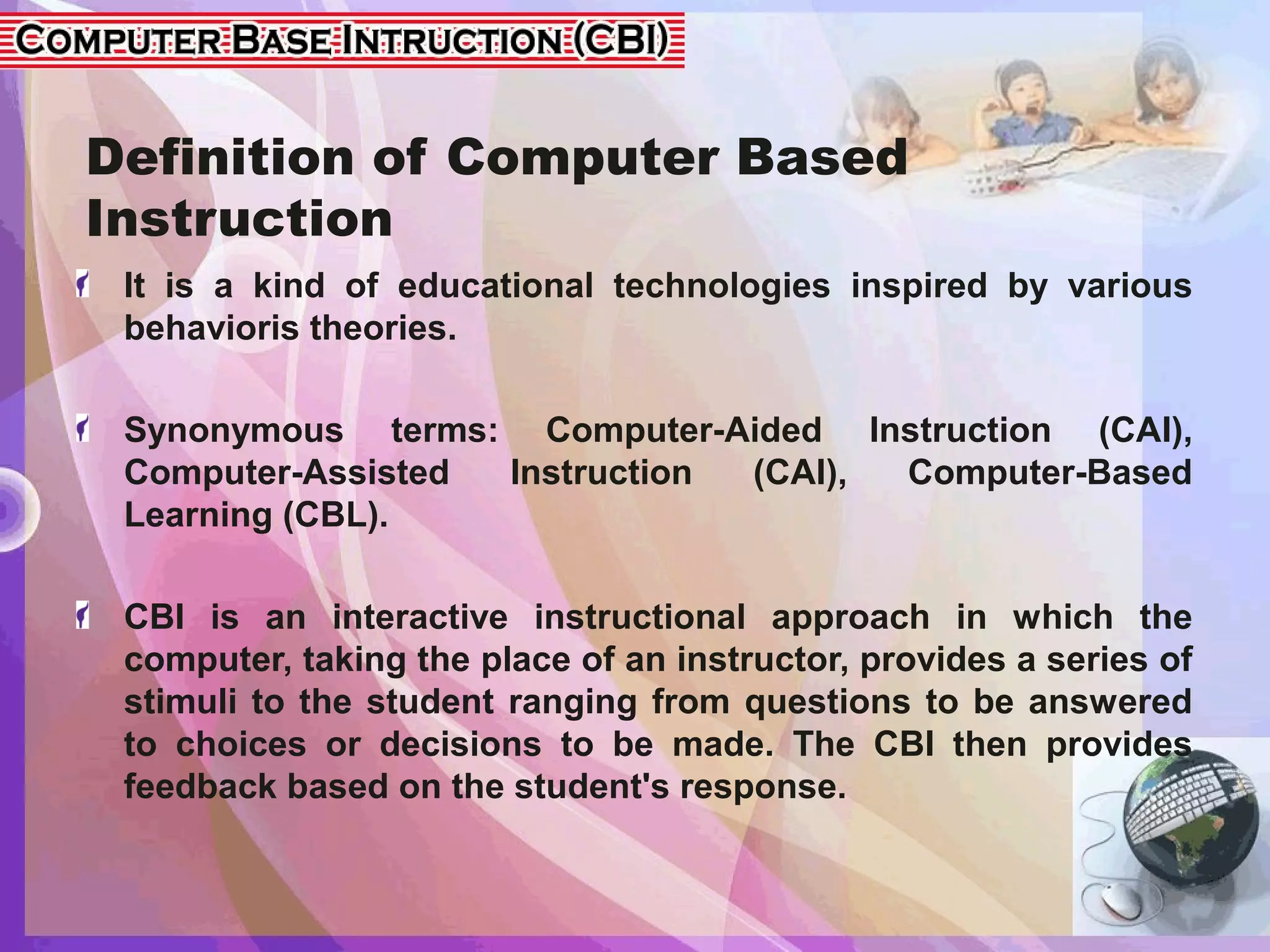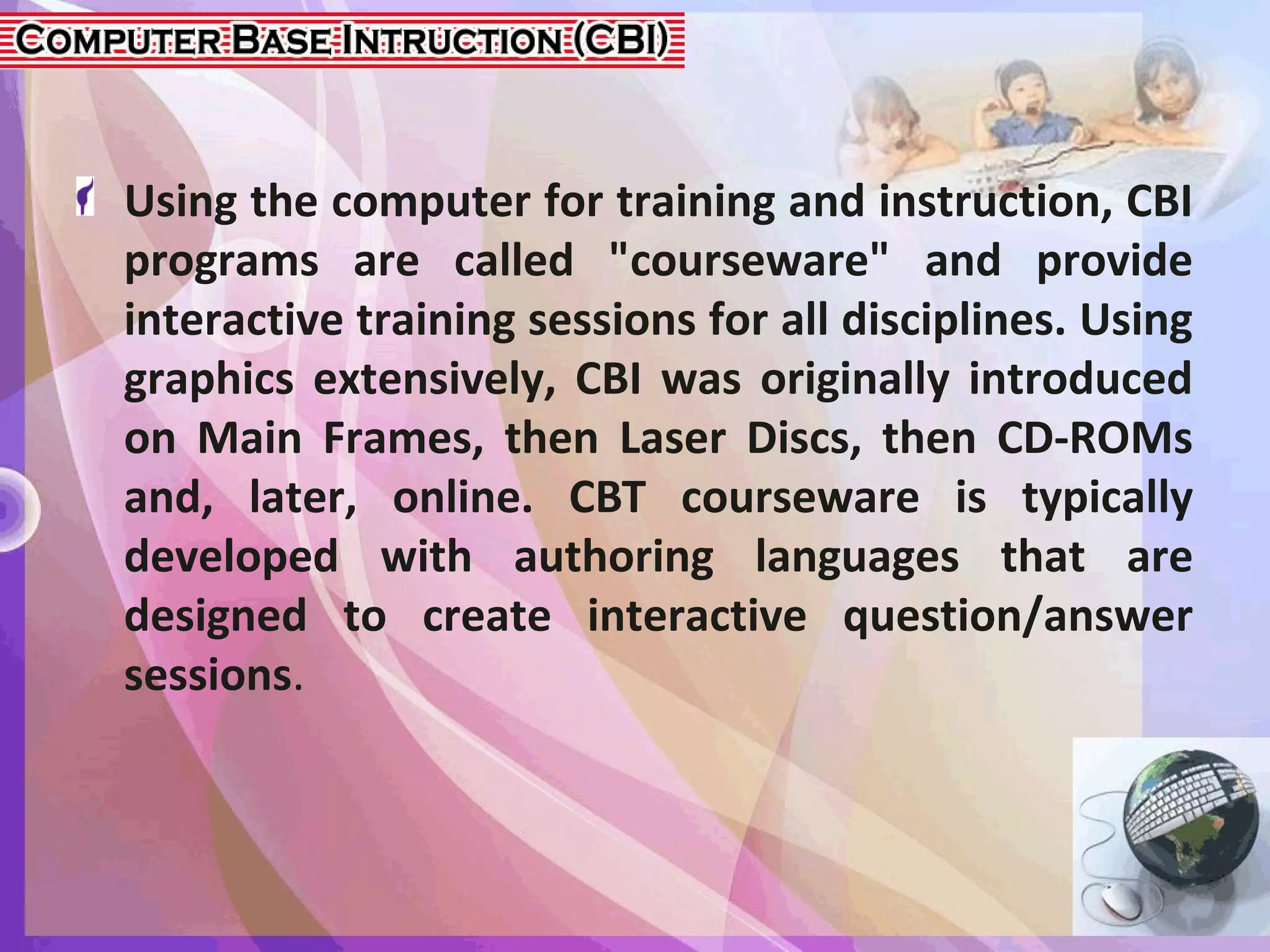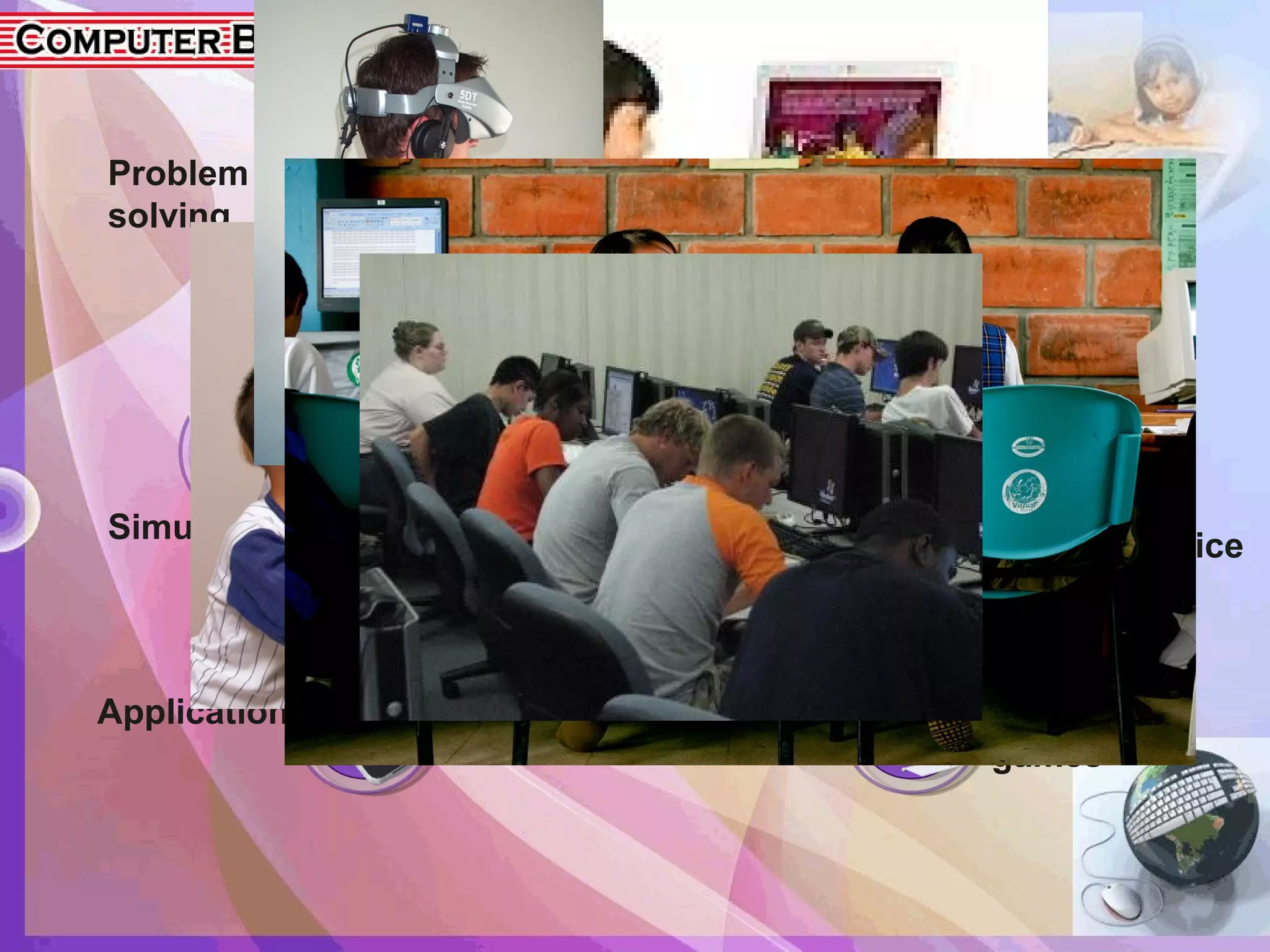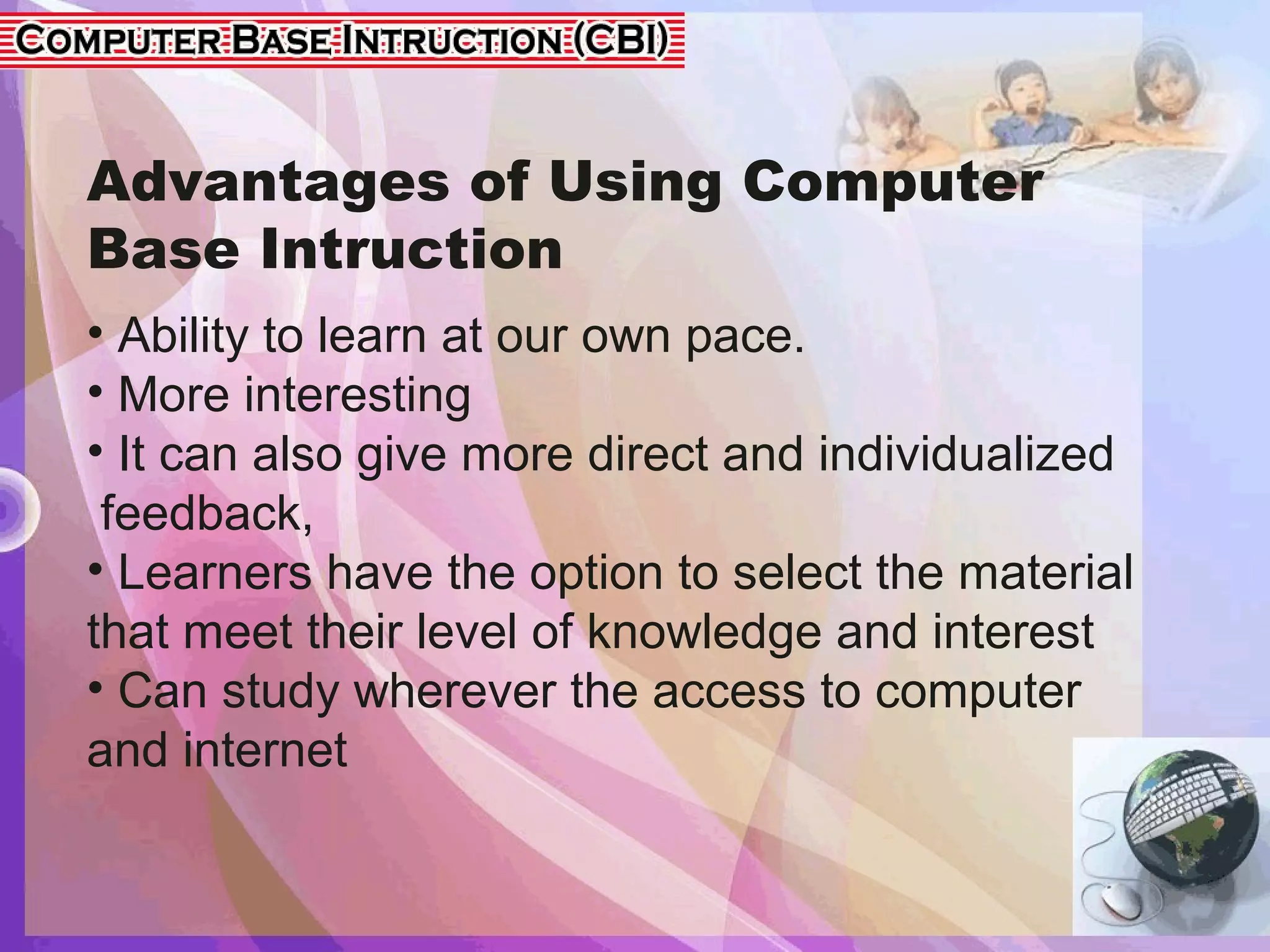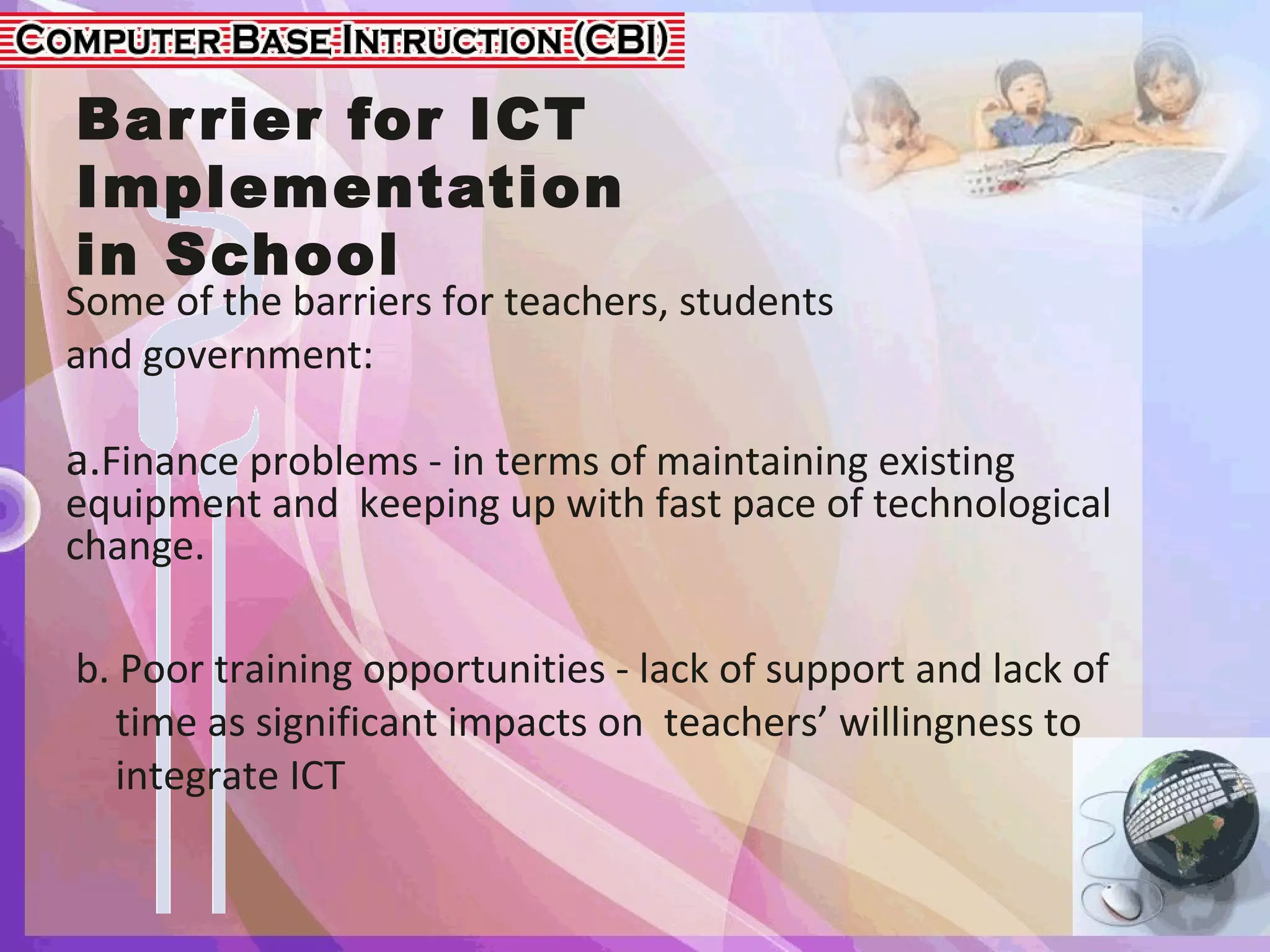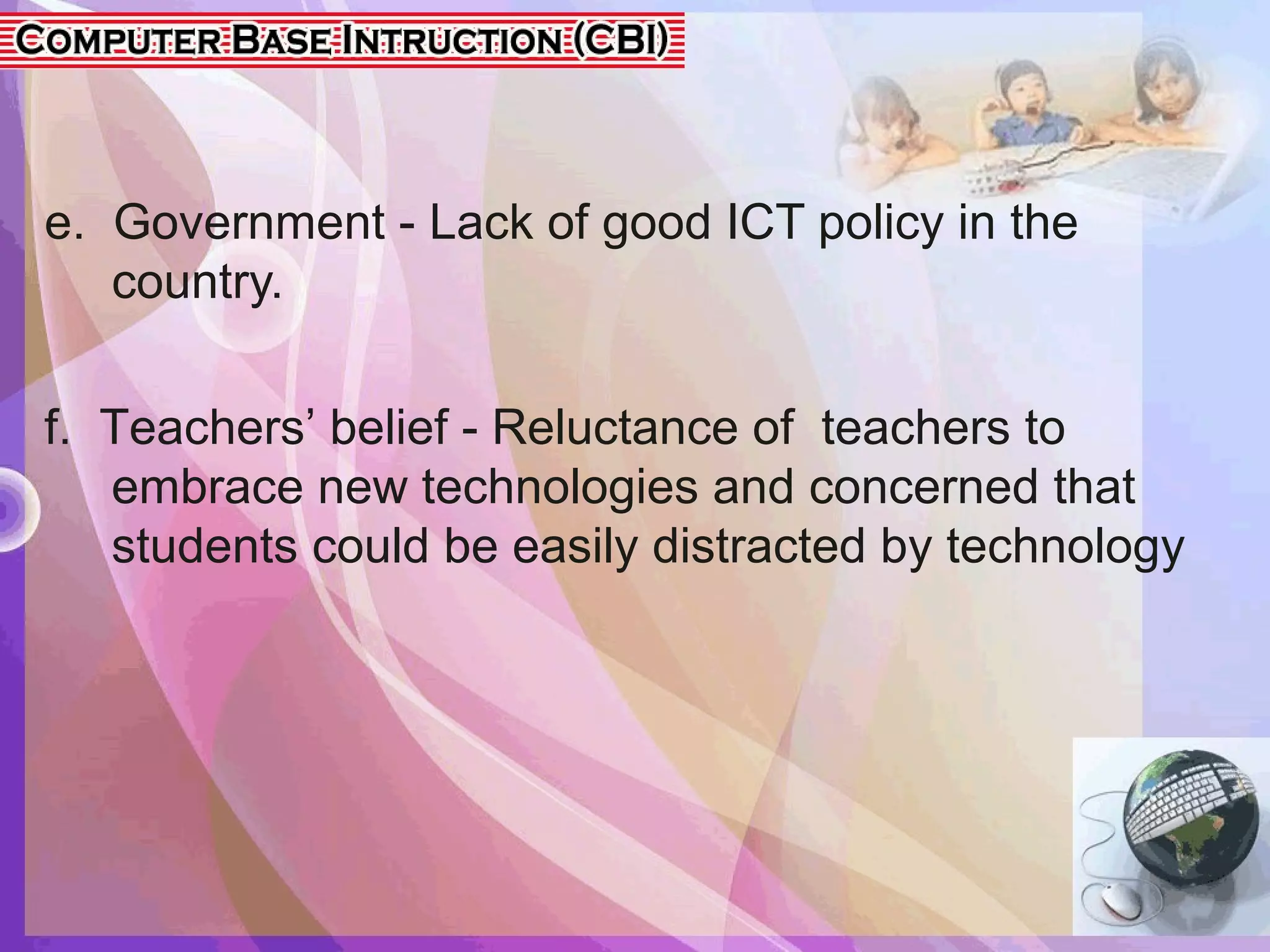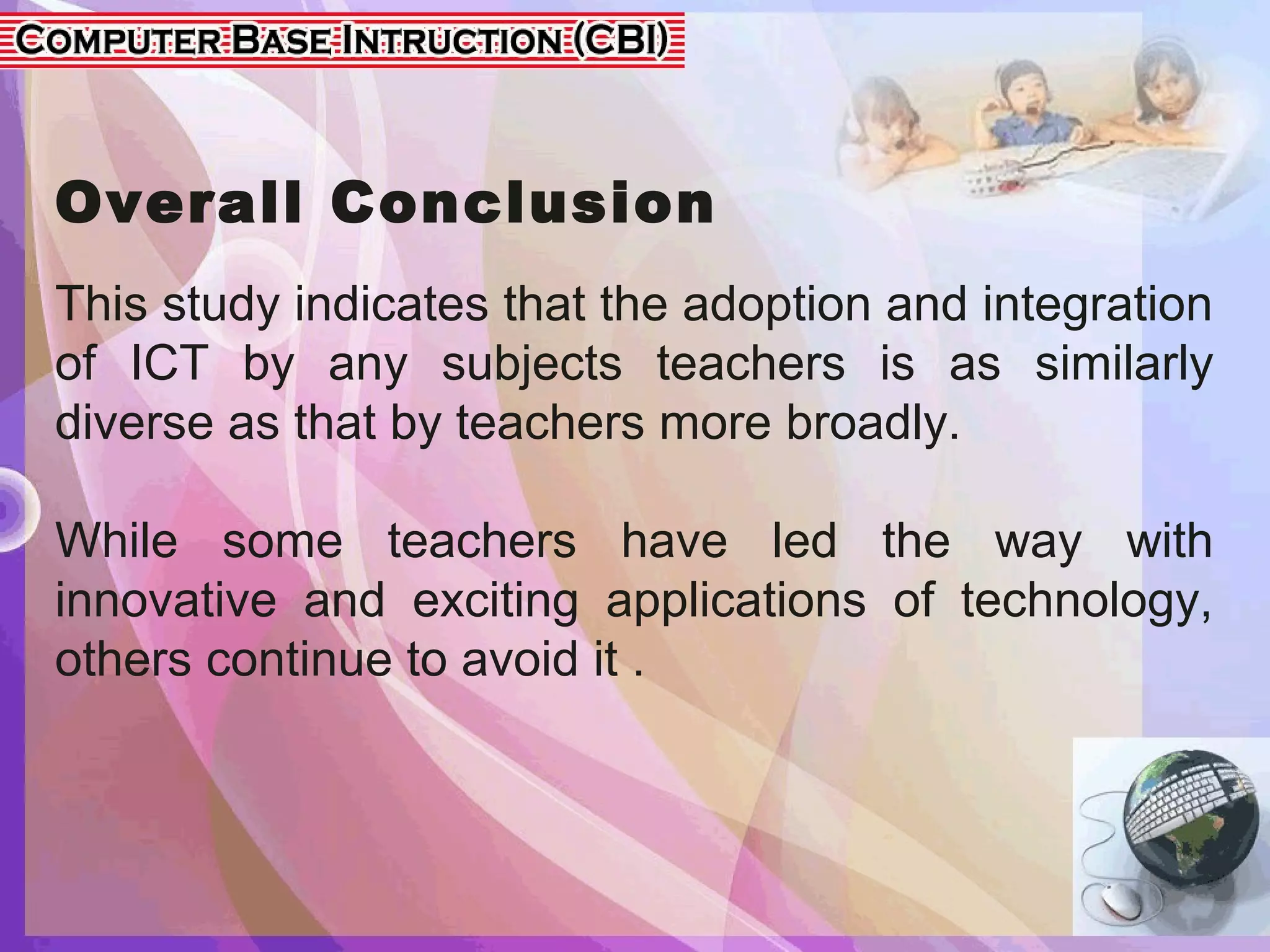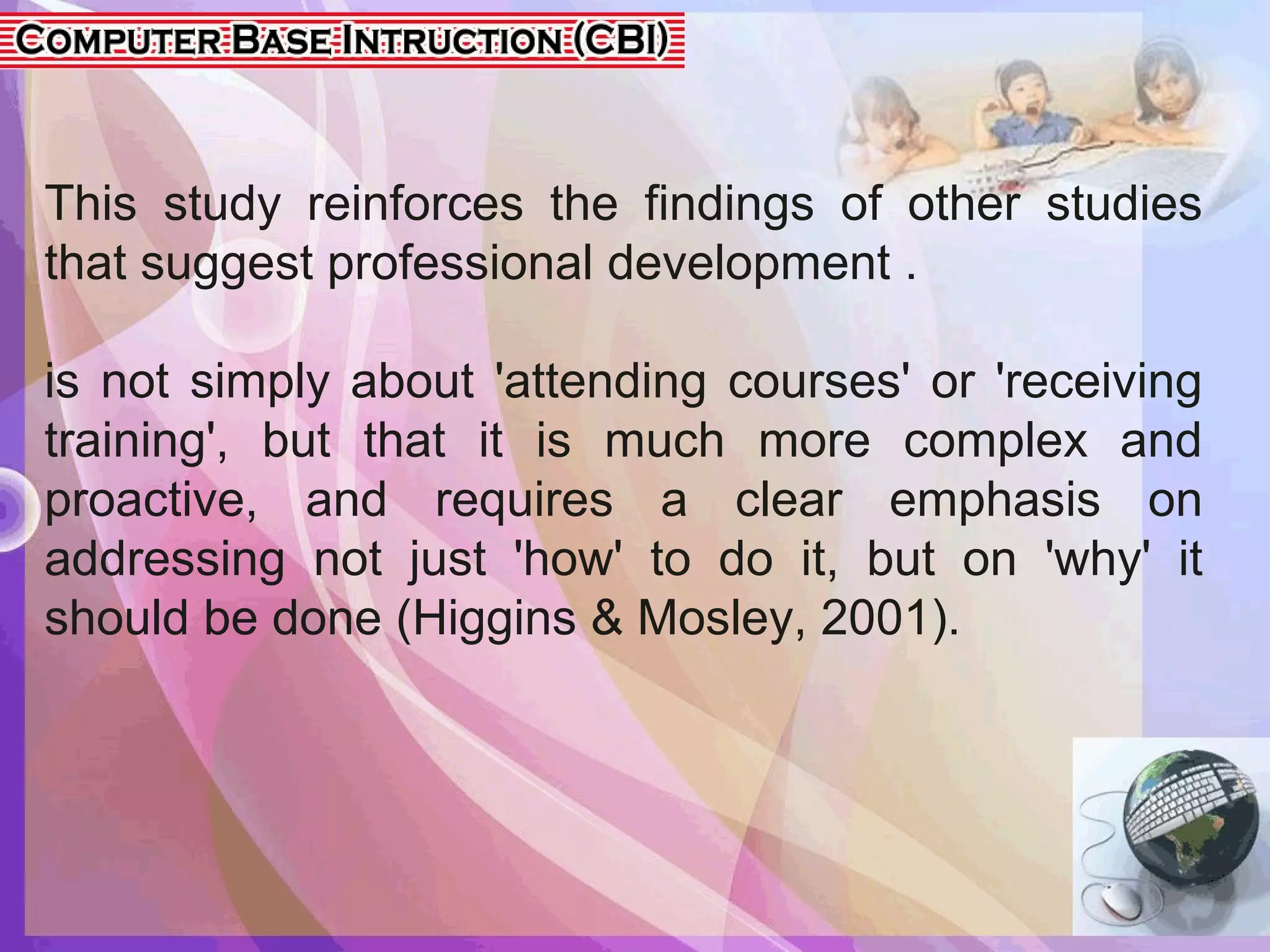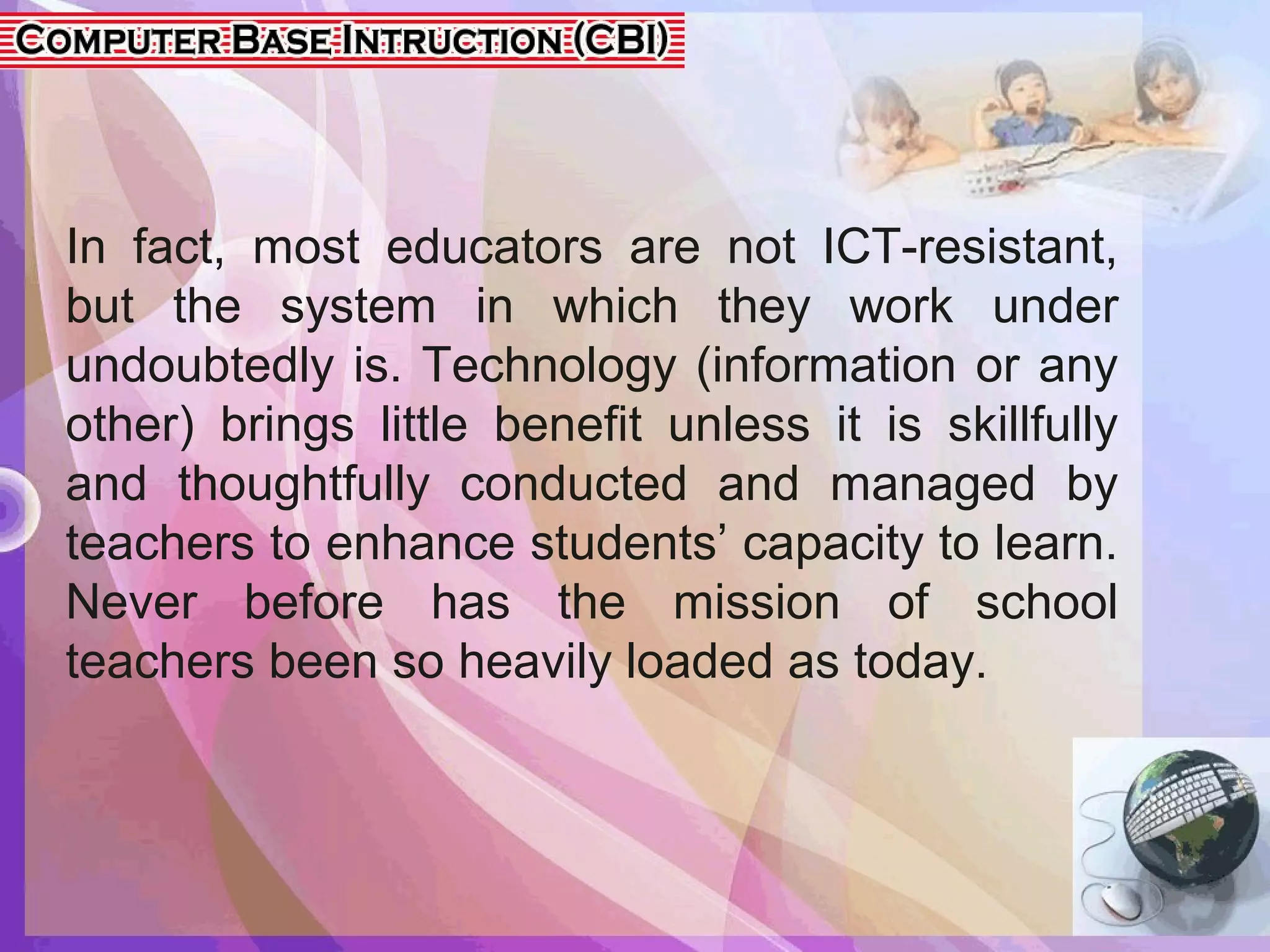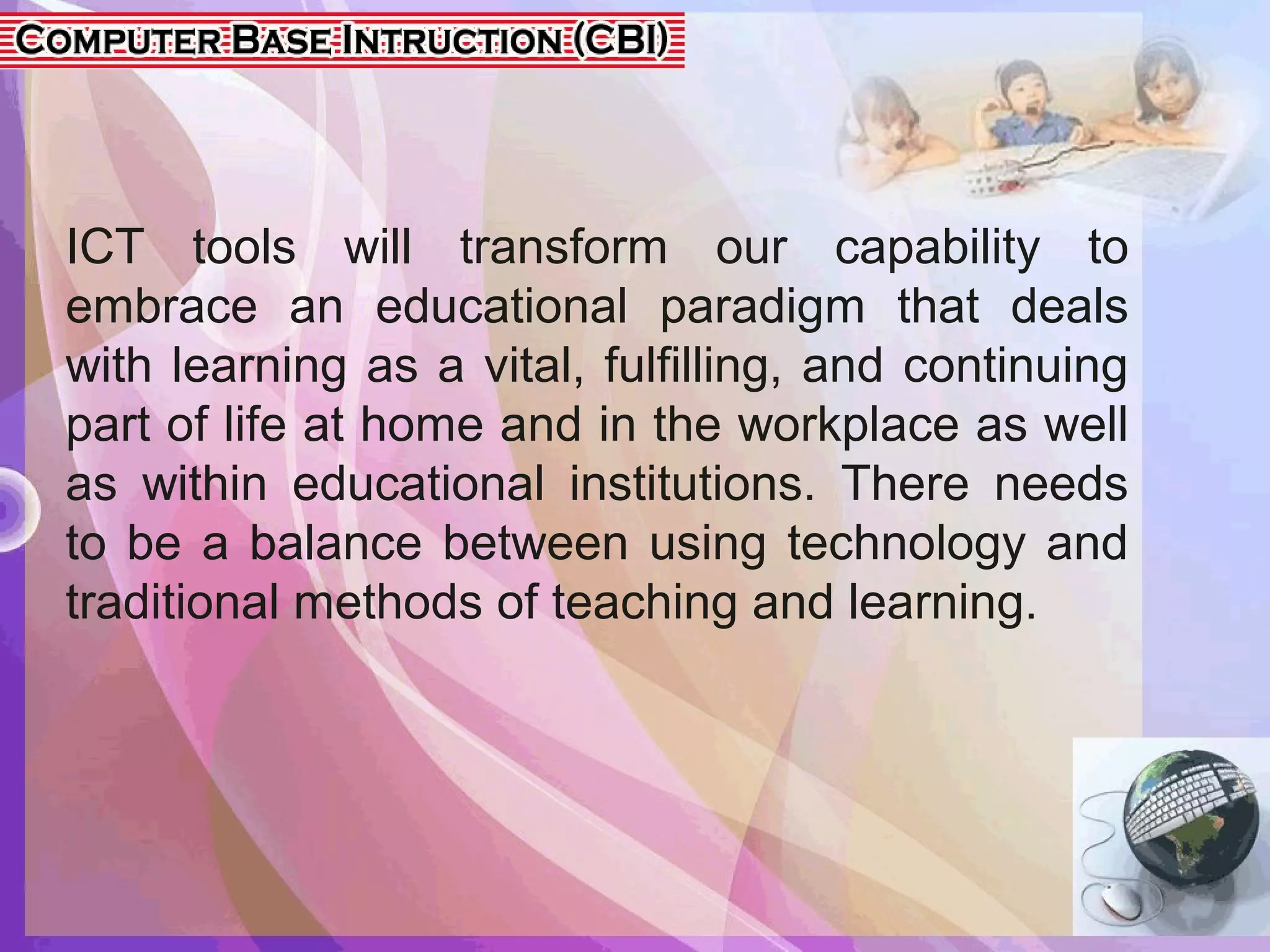This document defines computer-based instruction (CBI) as an interactive instructional approach where the computer takes the place of an instructor by providing stimuli and feedback to students. CBI uses methods like tutorials, drills, games, and simulations. It has advantages like allowing self-paced learning, providing interesting and individualized feedback. However, barriers to its implementation in schools include lack of funding, training, time, access at home, and supportive policies. While some teachers have innovated with technology, others avoid it, and professional development is needed to address both how and why to integrate information and communication technology (ICT) in teaching and learning.
